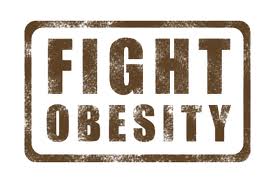 In collaboration with several co-authors, including Peggy Liu – a marketing PhD student here at Fuqua – I just published a paper on how behavioral economics can help us think about better ways to combat obesity. Feel free to check it out. And feel free to send along your thoughts, too.
In collaboration with several co-authors, including Peggy Liu – a marketing PhD student here at Fuqua – I just published a paper on how behavioral economics can help us think about better ways to combat obesity. Feel free to check it out. And feel free to send along your thoughts, too.
Using Behavioral Economics to Design More Effective Food Policies to Address Obesity
Promoting individuals’ healthy eating behavior is crucial for those interested in obesity-related policy questions (Costa-Font et al. 2013). Many existing policies designed to reduce obesity have focused on reducing calorie intake by increasing the availability of nutrition information, in the hopes that such information will lead consumers to make healthier food choices (Downs et al. 2009). These policies are based on the assumption that people act rationally when making food choices (Cawley 2004), which implies that people make suboptimal food decisions because they lack perfect information (Stigler 1961) and that access to better information should lead to better decision making. However, it is increasingly clear that such well-meaning policies, guided by a rational view of human behavior, have a relatively small impact on people’s food choices. Recognizing that many people have difficulty understanding numeric nutrition information and/or lack the motivation to make use of it can guide the design of better policies. In addition, it is important to realize that making use of such information can be difficult when self-control—a limited resource—is depleted (Baumeister et al. 1998).
Perhaps the best-known example of an information-provision policy is the Nutrition Labeling and Education Act (NLEA), implemented in 1994, which required accurate and consistent nutrition information to be printed on the Nutrition Facts label on packaged foods (Wilkening 1993). However, the NLEA does not regulate other on-package labels and exempts restaurant meals (despite such meals being higher in calories, fat, and saturated fat than home-cooked meals [Guthrie et al. 2002]). Thus, recent legislative and regulatory efforts have sought to extend the spirit of the NLEA to front-of-package labeling by devising a uniform nutrition label to post prominently on the front of packaged foods, and to restaurant dining through menu labeling, which requires chain restaurants to post caloric information prominently on menus (Hawley et al. 2013; Pomeranz and Brownell 2008; Roberto et al. 2011)… (Read more here)
